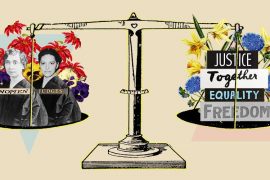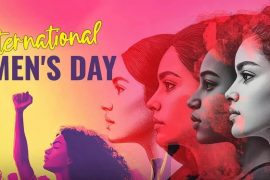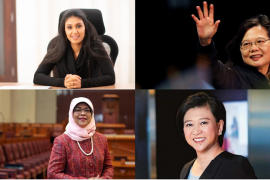By: Muneeza Naqvi
Gurjeet is the child Kaur yearned for desperately, after 40 years of being that thing which a rural Indian woman dreads more than almost anything else — barren. She gave birth at 58 years old, with help from a controversial IVF clinic in a corner of north India that specializes in fertility treatments for women over 50.
Such treatments have become more common across the world, and they strike a cultural chord in India, where a woman is often defined by her ability to be a wife and mother. While there are no reliable statistics for how many Indian women undergo fertility treatments each year at what age, tens of thousands of IVF clinics have sprouted up in the country over the last decade.
Fertility specialists say pregnancies like Kaur’s are troubling because of the potential health risks and the concern that the parents may not live long enough to raise their babies to adulthood. Legislation is pending in India’s Parliament setting 50 as the legal upper age cap.
But Dr. Anurag Bishnoi, the driving force behind the National Fertility and Test Tube Baby Centre in Hisar, harbors no such worries. His clinic’s website home page is dominated by photographs of patients who carried babies to term at ages well beyond what most other doctors anywhere in the world may permit. At least two of his patients gave birth at 70.
For Kaur, it’s simple enough. Bishnoi made her belong.
“You have no idea how I suffered,” she says of her life before her daughter.
Kaur married her husband, Gurdev Singh, when she was 18 and he was just a little older than 20. She simply assumed that children would follow marriage. But no children came.
She felt worthless.
“I asked God why he had abandoned me,” she says, as she nervously fidgets with the green scarf she uses to cover her almost entirely-grey hair.
With each decade she felt the dream slip further away. The couple tried IVF twice in their 40s. It didn’t work.
A woman in Kaur’s setting, without a child, is an inauspicious creature. Her very presence is shunned at social gatherings, especially at weddings and birth ceremonies which celebrate fecundity.
It was Kaur’s nephew who first heard of Bishnoi, the doctor in the nearby town of Hisar, who had built a prosperous medical practice and tidy little business empire by helping aging women across north India have children through in-vitro fertilization.

“Doctor Sahib was like a god to us, Singh says.”
Dr. Anurag Bishnoi is called many things. God and quack top the list.
His critics accuse the embryologist of making money off the dreams of the desperate, and of taking wildly unnecessary risks. When Bishnoi helped a 70-year-old woman to give birth last April, Dr. Hrishikesh Pai, who heads a federation of Indian gynecologists and obstetricians, called him a “rogue doctor” who ignores the self-imposed guidelines that most fertility specialists follow.
Dr. Narendra Malhotra, who heads the Indian Society For Assisted Reproduction, says Bishnoi has been attempting to “play God.”
“We don’t endorse making mothers out of grandmothers,” he says. “It’s too risky for the women. Their bodies are not designed to bear children after 50.”
He says his association has requested that Bishnoi stop working with significantly older women, with no success.
“He’s not breaking any law because there is no law,” Malhotra says.
Most medical ethics guidelines around the world recommend a cut-off between 45 and 50 for treatments like IVF, and the Indian Medical Council sets 45 as the recommended age limit. Across the United States and most parts of Western Europe, insurance companies usually stop paying for IVF treatment after 45.
Every now and then, news reports pop up about women across the world giving birth in their 50s and 60s but most doctors offering assisted reproductive treatments to women over 50 do it on the down low. But Bishnoi doesn’t hesitate to promote his work.
Bishnoi says he chooses his patients after a series of medical examinations and has never had a patient die.
For older patients like Kaur, who make up 20 percent of his practice, Bishnoi harvests eggs from anonymous donors, but in a deeply patriarchal culture, what really matters is that the sperm belongs to the father. He likens his patients to the military.
“They are soldiers of their family,” he says. “And of course the risks involved are there, but soldiers don’t care.”
The packed waiting room at Bishnoi’s clinic bears witness to the fact that working-class families across the country are willing to spend their limited savings for a child of their own. The cost of IVF treatment in India is relatively low, even though many families have to pay on their own. At Bishnoi’s clinic, one cycle of IVF costs about 110,000 rupees ($1,700), compared to about $12,000 in the U.S.
Gurdev Singh says the money was nothing. “What matters is that he gave us our little doll.”
Kaur and Singh say they feel no fear and anxiety about raising their child at an age when most people are grandparents.
“This is all God’s will,” Singh says.
Kaur says she has no trouble at all taking care of her daughter. In fact, she is already thinking of trying IVF again to give Gurjeet a sibling. She waits, impatiently, for the day when she can talk to her child.
“One day when she is older, she will share my joys and sorrows,” Kaur says. “She will ask me, ‘Mummy, how did you pass the days before I came?'”



